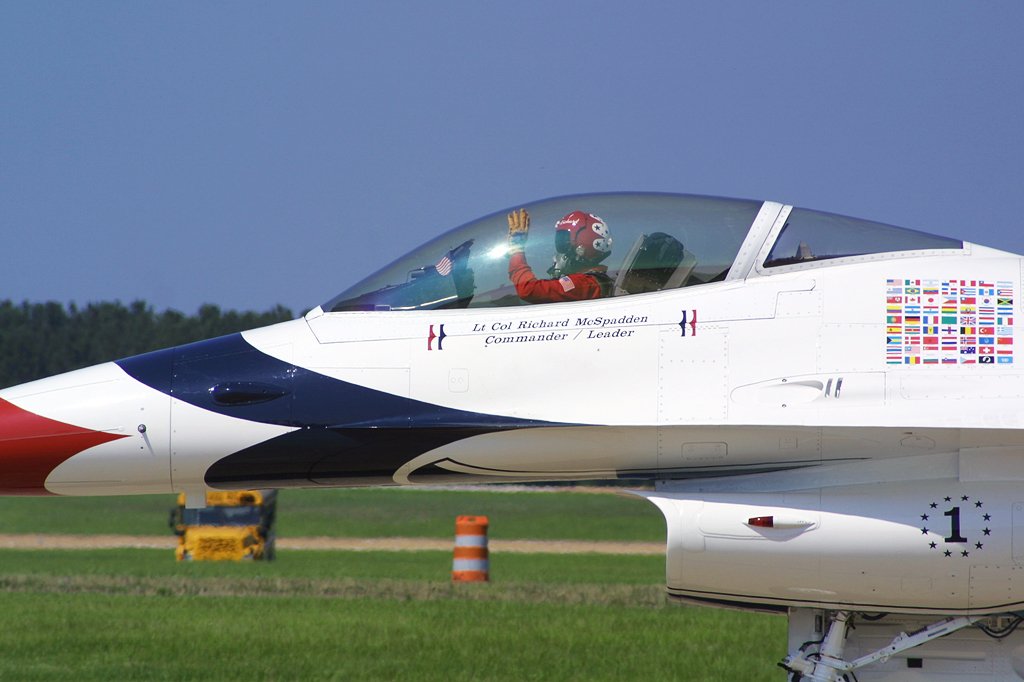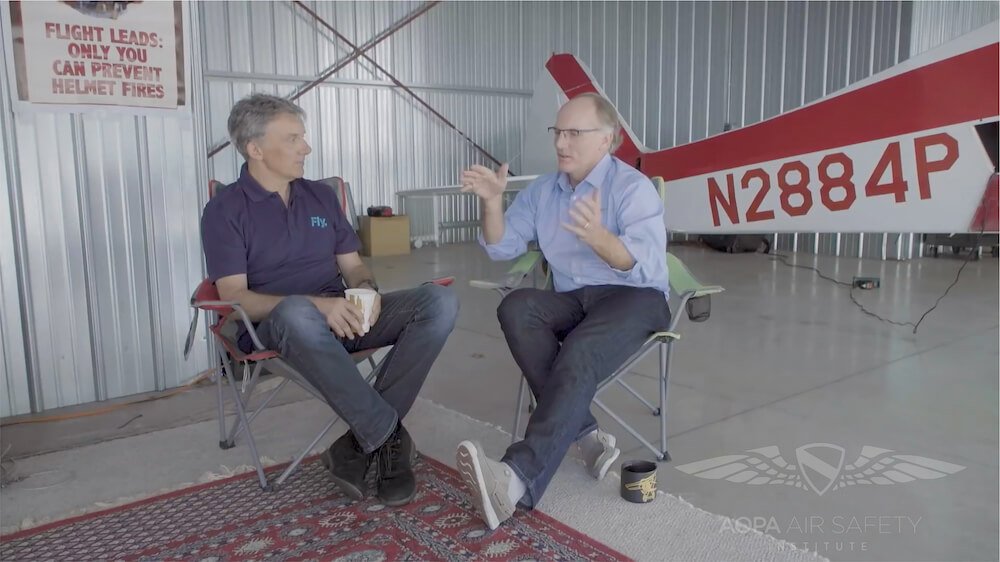
CFS 2022 Speaker Profile: Richard McSpadden
Richard McSpadden
AOPA Air Safety Institute Senior Vice President
NATCA is honored and excited to announce that former Air Force Thunderbirds commander Richard McSpadden, now the Aircraft Owners and Pilots Association (AOPA) Air Safety Institute (ASI) Senior Vice President, will speak at CFS 2022.
McSpadden was appointed executive director of the ASI in February 2017 and was promoted to senior vice president in July 2020. He currently leads a team of certified flight instructors and content creators who develop and distribute aviation safety material –free of charge— in order to advance general aviation safety industrywide. ASI distributes material through a dedicated YouTube channel, iTunes podcasts, Facebook, and a dynamic website. ASI material is accessed 12 million times annually.
A native of Panama City, Fla., McSpadden started flying as a teenager and has logged over 5,000 hours flying a variety of civilian and military aircraft. McSpadden is a commercial pilot, CFII, MEI with SES, MES ratings and a 525S (Citation Jet Single Pilot) type rating. He taught his son to fly, instructed his daughter to solo in their Piper Super Cub, previously owned a 1950 Navion that was in his family for almost 40 years, and currently owns a 1993 Piper Super Cub.

McSpadden also served in the Air Force for 20 years, including the prestigious role of commander and flight leader of the U.S. Air Force Thunderbirds flight demonstration team where he led over 100 flight demonstrations flying the lead aircraft.
We asked McSpadden about his love of aviation, current issues he is addressing, and pilot-controller communications:
Your passion for flying and extraordinary breadth of experience are inspirational and legendary. At what age did you first fall in love with aviation and when was your first flight?
McSpadden: My father inspired my brother, a UPS 747 captain, and me. As early as I can remember, we were building model airplanes and flying hand toggled airplanes around in a circle. I got hooked as a junior in college, when I saw how much my Dad was enjoying his flying lessons. I started soon after him, in Greensboro, N.C., at a small airport, Air Harbor (W88) and then signed up for Air Force ROTC to fly for the USAF.
What are your biggest goals as the senior vice president of the AOPA Air Safety Institute and how have you expanded the offerings of materials to pilots since you joined the ASI in 2017?
McSpadden: Reduce general aviation mishaps. We’ve made great progress in GA, reducing our fatal accident rate by more than 50% since the mid ’90s, but there’s more work to be done. We work to make sure we meet pilots with engaging, educational safety material wherever, whenever, and however they consume information, so you can find us on YouTube, Facebook, and Instagram. We continue to advance our material with fresh voices and a new tone. Reach is important to us. To impact how pilots fly, you have to influence how they think, and to do that you must first reach them.
At Sun ’n Fun, you presented a seminar on avoiding and escaping from airframe icing. Many of our NATCA members have worked to assist pilots who have encountered icing. What are the most important points you made during that presentation that would be of highest educational value for our members?
McSpadden: First to take icing seriously. It can develop outside of the forecast and your situation can deteriorate rapidly. Don’t enter IMC conditions that are conducive to icing, which can be above freezing level. Second, know your “bail out” direction. Study the forecast so you know which direction to head to get out of the icing. Finally, use controller help. Fess up if you get in trouble. They are much more interested in helping you out of trouble than “violating” you. Ask them for a vector to the closest favorable conditions.
The past year and a half during the pandemic has brought both peaks and valleys in general aviation activity. What do you believe have been the highlights and what are some things that happened that pilots can learn from to improve safety?
McSpadden: Our safety record has been impressive. Dormant airplanes and dormant pilots are by themselves a problem. Together, they’re a serious concern. So we were worried about our safety performance as pilots emerged from quarantine. But, what we saw is, GA pilots kept their knowledge sharp on webinars and online courses, and when they came back, they did so carefully, flying at the level of their proficiency. It was a positive indicator on how serious GA pilots take safety and the record reflected it. And it’s continuing. We’re off to one of our best GA safety years in decades.
We have seen large numbers of pilots attending various pilot webinars with our members and a very positive response to our interactions. Can you talk about the encouragement you feel when you see increased levels of communication and learning between pilots and controllers?
McSpadden: I love it! It’s so positive for aviation. I remember when the controller/pilot relationships were adversarial. Pilots didn’t trust controllers and likewise controllers were suspicious of pilot intent. Now I see a much more collaborative and positive relationship. Some of our most popular seminars are our “Ask the Controller,” which NATCA has helped us deliver. They always go long, with more questions than we have time to answer. It helps to dispel myths and urban legends. Pilots get direct, accurate answers from a source they can trust. It’s great to see pilots react to the face behind the voice and realize, you’re just professionals, trying your best to be good at your job, just like we’re trying our best to be good pilots.


